Portuguese Sardines
The best of tinned fish
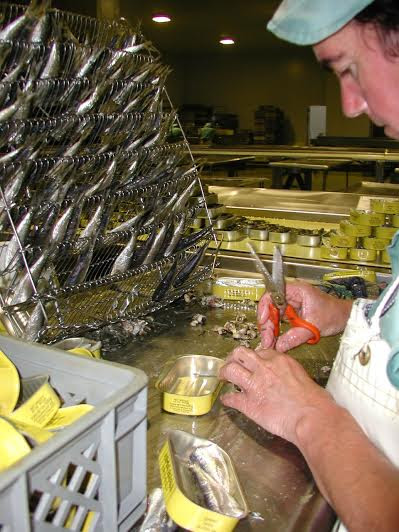
Packing Sardines by hand in Portugal
Sardines were the original convenience food.
In the early 1800s, Pierre-Joseph Colin was the first person to can fish, and the first fish he canned was the sardine he grew up eating in Brittany, France. By 1836, his factory was producing about 30,000 tins per year. Every tin was made and packed by hand. Most of them were used to feed the French military. The soldiers used their bayonets or rocks to smash open the tins, since the can opener wouldn’t be invented for another twenty years.
For more than a century, tinned sardines dominated the market for quick, prepared convenience food. They filled workers’ lunch boxes and government pantries stocked up for bomb threats. In her memoir Bones, Blood, & Butter, James Beard Award-winning chef Gabrielle Hamilton recalls eating tinned sardines on Triscuits when she was growing up. (At her restaurant Prune in New York, she’s had a version of that dish on her menu for years. I had the chance to eat it a week ago; it was fantastic.) In the middle of the 20th century, tinned sardines were the student’s equivalent of today’s ramen—cheap and quick food (and, unlike ramen, fairly nutritious). With the rise of TV dinners and other pre-made meals, sardines fell off their prominent perch. Their workaday reputation, though, has remained.
On the other side of the Atlantic, sardines are fancier fare.
In 1935, Oscar Wilde’s son started London’s first sardine tasting club. And Jose Carlos Capel, the food critic of Spain’s most widely circulated daily newspaper, once said, “In the larders of some European gourmets, tins of sardines in olive oil occupy a place of honour alongside pots of foie gras with truffles or jars of caviar. A cult has built up around these canned fish, which… constitute a kind of gastronomical religion.”
Perhaps no country loves its sardines more than Portugal. The Golden Book of Portuguese Tinned Fish from 1938 reported that “among the great variety of Portuguese tinned fish, the sardine occupies the most important place.” Lisbon is still a working fish port. Sardines account for a third of the fish brought in each year—a fact that’s even more remarkable when you consider that sardine season in Portugal is only six months long, from May to October. During the season, fresh sardines are the ultimate Portuguese street food. You eat them grilled, maybe with potatoes or bread or a salad. A block or two away from Lisbon’s port is a shop that sells nothing but tinned fish. Even with the bounty of fresh fish available, tinned fish remain an integral part of Portuguese eating.
You can get good tinned sardines from around the Mediterranean.
There are producers in Spain, France, and Portugal that all offer high quality fish. From these countries, the sardines are generally pilchards. What we call “sardines” can actually be any of a handful of different small fishes, including ones from the herring and sprat families. Pilchards are the fattest and most tender. Labeling laws require that any non-pilchard fish canned as “sardines” must include an identifying label on the inside of the tin.
Good Spanish and French sardines have a subtleness to them; Portuguese sardines tend to have a bit more of an edge. It could be described as being more briny, or just more intense. One Portuguese sardine aficionado I know described it as a “tsk tsk tsk”—a certain extra succulence she couldn’t quite put to words.
We get our Portuguese tinned sardines from da Morgada. Many of the fishermen are the second generation to work for the company. They tin the sardines only during the sardine season with fresh, not frozen, fish. Each tin is still packed by hand, just like they did in France in 1836, with four or five fat fish nestled in olive oil. We sell tins packed with pure olive oil and ones packed in extra virgin olive oil. Both are fantastic; the ones in extra virgin oil are a bit softer, rounder, more buttery. The sardines in pure olive oil are packaged in a handsome box designed by Zingerman’s artist Ryan Stiner.
Sardines packed in olive oil get better with age.
Just like aging cheeses or wines can produce more intense flavors, tinned sardines packed in olive oil that are aged for a few years—or even a few decades—can develop bigger flavors. Having a collection of vintage sardines may not be as flashy as having a cellar full of aging wines or a humidor filled with good cigars, but it can make for some very good eating. Starting a sardine collection is easy: just pick up a few tins, keep them somewhere cool and dry, and turn them every now and again so they age evenly. Make sure you’re using very good sardines since aging them will emphasize the flavors that are already there. Good sardines will get better while inferior sardines will taste increasingly mediocre.
Four ways to use tinned sardines for dinner next Tuesday:
- Toast up some crusty bread , top it with good olive oil, a squeeze of lemon juice, some arugula, and a couple sardines
- Serve couscous topped with tomato sauce, capers, and sardines
- Scramble eggs with a bit of cream and Dijon mustard and serve over warmed sardines
- Saute up a mess of onions til soft and golden, mix in a tin of sardines and serve over pasta with freshly cracked black pepper






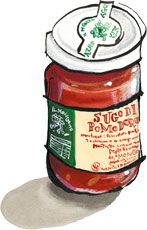

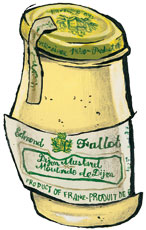
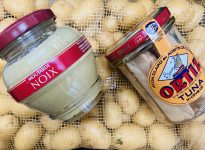

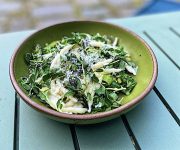
Zingerman’s Art for Sale